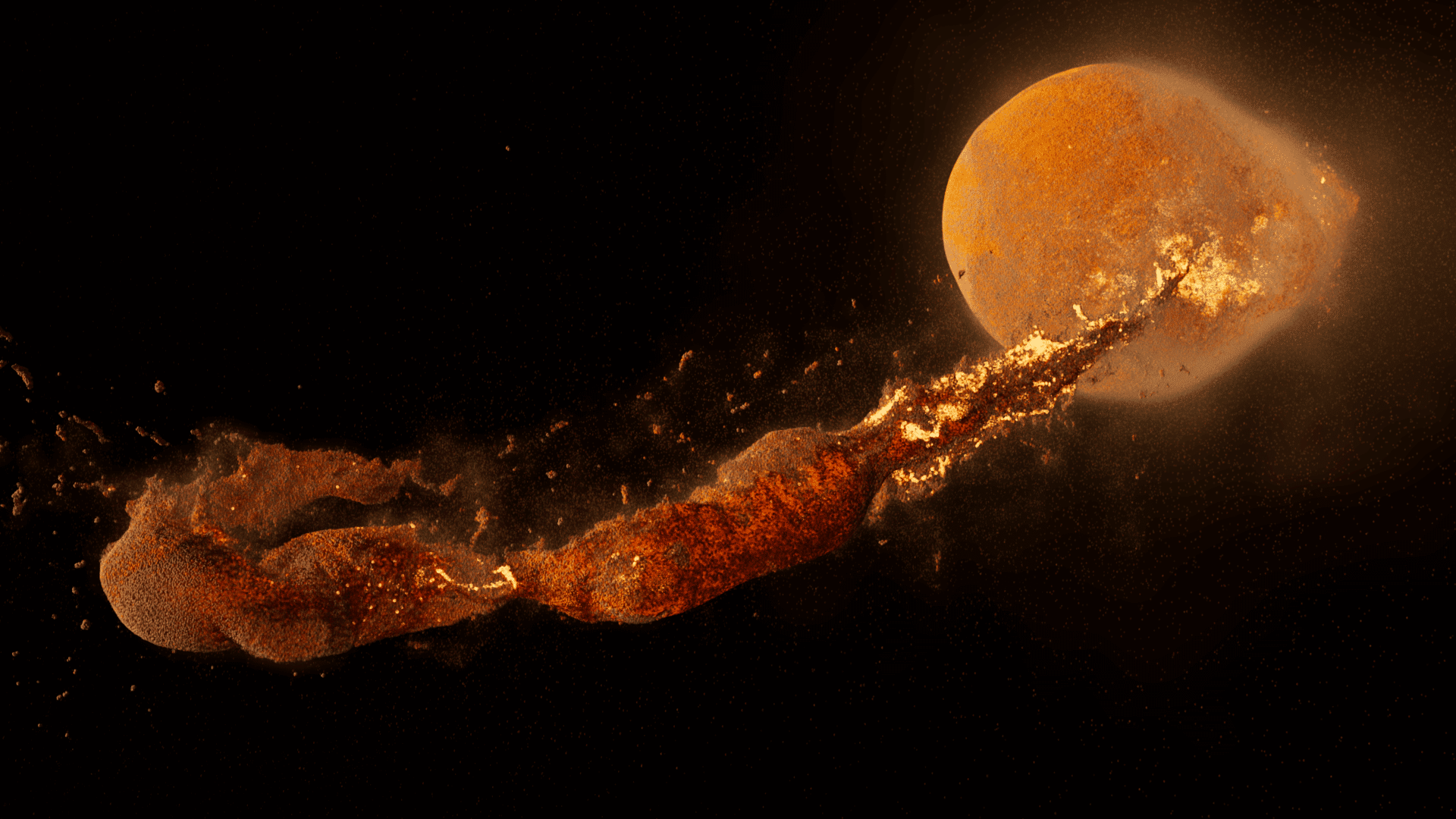Scientists from Durham University's Institute for Computational Cosmology have used the most detailed supercomputer simulations to date to uncover an alternative explanation for the origin of the Moon, in which a giant impact put a Moon-like body in orbit around Earth.

Scientists from Durham University's Institute for Computational Cosmology have used the most detailed supercomputer simulations to date to uncover an alternative explanation for the origin of the Moon, in which a giant impact put a Moon-like body in orbit around Earth.
The researchers simulated hundreds of different impacts, changing the angle and speed of the collision as well as the masses and rotations of the two colliding bodies in their search for scenarios that could explain today's Earth-Moon system. These calculations are performed using the open-source simulation software SWIFT, which runs on the high-memory COSMA service at Durham University.
The added computational power revealed that the lower-resolution simulations could miss important aspects of large-scale collisions, allowing the researchers to discover features inaccessible to previous studies. Only the high-resolution imaging created the moon-like satellite, and the extra detail showed how its outer layers were rich in Earth-derived material.
If a large part of the moon formed immediately after the giant impact, it could also mean that a smaller part was melted during the formation compared to the usual theories according to which the moon developed in a debris disk around the earth. Depending on the details of the subsequent solidification, these theories would predict different internal structures of the moon.
Vincent Eick, co-author of the study, said: "This formation pathway could explain the similarity in the isotopic composition between the moon rocks returned by the Apollo astronauts and the Earth's mantle. There may also be observable results in the thickness of the lunar crust, which will allow us to more accurately identify the type of collision that occurred."
In addition, they discovered that even when a satellite passes so close to Earth that it can be expected to be torn apart by "tidal forces" from Earth's gravity, the satellite can actually not only survive but also be pushed into a wider orbit, where it will be safe from future destruction.
Jacob Kagris, lead researcher of the study, said: "This opens up a whole new realm of possible places where the moon began to develop. We went into this project without knowing exactly what the results of these high resolution simulations would be. So in addition to the great enlightenment that the usual resolutions can give wrong answers, it was especially exciting that the new results could include a tempting moon-like satellite in orbit."
The moon is thought to have formed after a collision 4.5 billion years ago between the young Earth and a Mars-sized object called Thea. In most theories the moon was formed by the gradual accumulation of the fragments from this impact. But measurements of the lunar rocks - which showed that their composition is similar to the composition of the earth's mantle, while the impact creates fragments that come mainly from Thea - cast doubt on this.
This instant-satellite scenario opens up new possibilities about the Moon's initial orbit as well as its predicted interior composition and structure. The many upcoming lunar missions will reveal new clues about the type of giant impact that led to the moon, and from it we will learn about the history of Earth itself.
More of the topic in Hayadan:
- Israeli research: the moon was formed as a result of several collisions with celestial bodies, not as a result of a single collision
- Imaging proved: the moon was formed from material that was blown off the earth when a large body collided with it
- The moon was formed in less than 20 million years
- The Israeli Helios will produce oxygen and metals on the moon in a joint experiment with Japan

5 תגובות
tree
May I ask what you base your assertion on?
There is no possibility that the "white" moon was removed from the earth, it is physically impossible for such a thing to happen. The moon came from outside and stayed in its place.
Once the moon was green and blooming and married to the planet, Venus. One day he was caught cheating with someone from Cassiopeia and with the tremendous kick she gave him he became a cold and lifeless wreck forever roaming around the earth in a kind of drudgery. (Abridged summary from the newspaper "The Galaxy" published in 876244490 languages).
The moon is a complete anomaly.
It is the only satellite that has no proportion
relative to the planet it orbits
It has no magnetic field.
It is "locked" on a ball
in such a way that most of it cannot be seen
In the craters on it there is an anomaly
Because both, in the large and small craters
At the same depth...
And the list is long...
By the way, NASA dropped the space vehicle that landed the astronauts on the moon
And to their astonishment they discovered that the moon is hollow...
And in another experiment the conclusion was confirmed
There are many attempts to understand..
But so far except for "effects"
Technologists who have perfected themselves through a multitude of theories
No one really has a clue
How does a planet the size of Venus ... hold up
A satellite so huge...bigger than Mercury
And bigger than Pluto
And bigger than several moons of Saturn...
The distance to understand everything still exists...
Oh my... I really miss the corner in the legendary show "Lila Gov" called: "And it's interesting to the ~t".
This article is perfect!!!